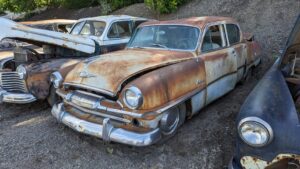Mazda CX-90 Luggage Test: How much space behind the third row?

The CX-9 was one of the first vehicles to be luggage tested … and remained one of the smallest three-row vehicles to be luggage tested in the ensuing four years. Wow, have I really been doing these that long?!?
Anyway, the CX-9 had 14.4 cubic feet of space behind its raised third-row, which is on the low end for the segment. Well, the CX-9 is dead. Long live the new 2024 Mazda CX-90. With that extra zero you get extra fanciness, extra power, extra hybrid availability and, important for this particular exercise, extra cargo space. But not that much extra. The specs say most versions have 14.9 cubic-feet, so don’t expect a big-time improvement here.
“Most” versions would include this CX-90. However, the CX-90 Turbo S version has only a two-person third-row rather than a three-place one, which for some reason increases cargo capacity back there to 15.9 cubic-feet. I’m curious to know how that would effect what you’re about to see, but for now, onto a version I actually can test.
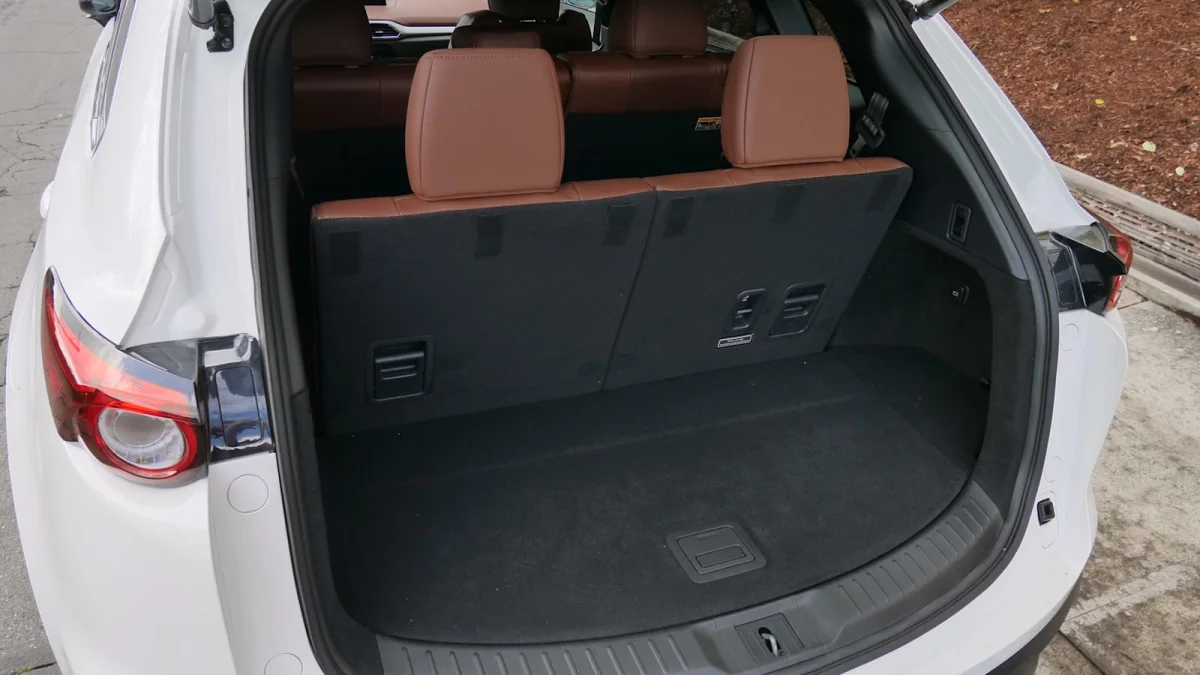
Above left is the space available. It’s pretty typical for a three-row family crossover, but it’s definitely different from the CX-9 pictured above right. The CX-90 appears to not have as much depth, but as it turns out, that’s an optical illusion. The upper portion is definitely less raked, which should make a difference by providing a boxier area better suited for stacking bags.
Unfortunately …

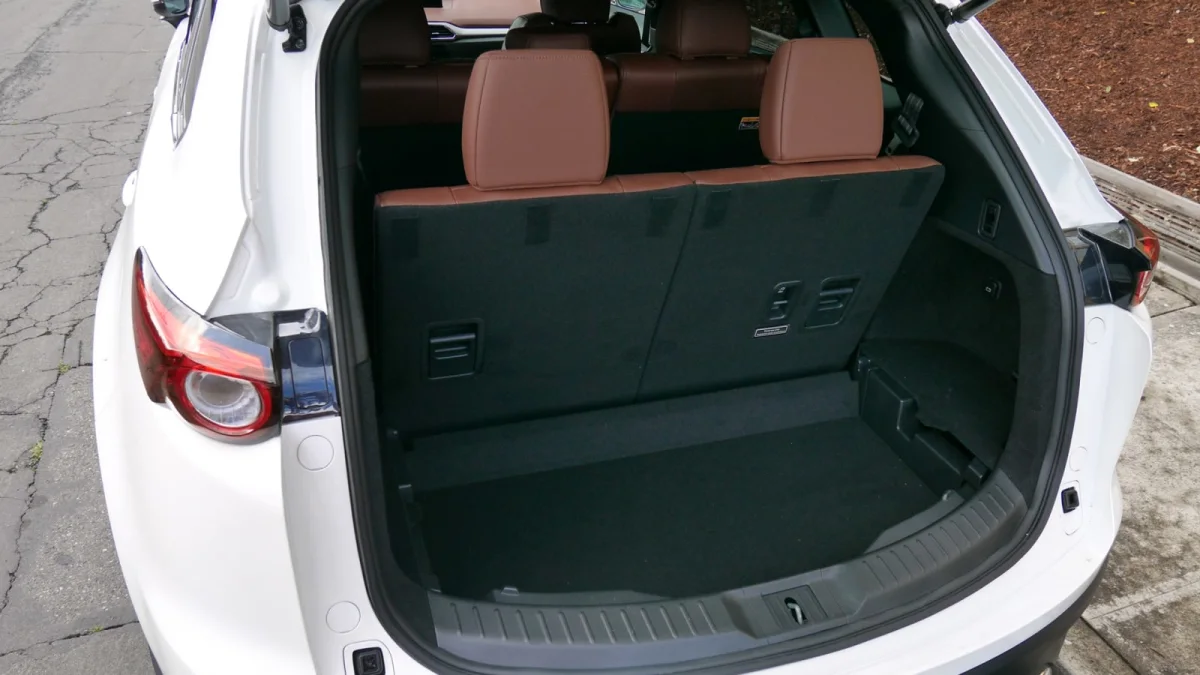
The CX-90 does not inherit the CX-9’s useful underfloor storage area, which considerably expanded the available space.
I’ve been told that this is what the underfloor area looks like regardless of whether you get the turbo powertrain or the plug-in hybrid, the latter of which this CX-90 has.
With all this considered, let’s see how the cargo-carrying abilities differ (and if you’re wondering, I will get to comparisons with currently for-sale rivals later).
As with every luggage test, I use two midsize roller suitcases that would need to be checked in at the airport (26 inches long, 16 wide, 11 deep), two roll-aboard suitcases that just barely fit in the overhead (24L x 15W x 10D), and one smaller roll-aboard that fits easily (23L x 15W x 10D). I also include my wife’s fancy overnight bag just to spruce things up a bit (21L x 12W x 12D).
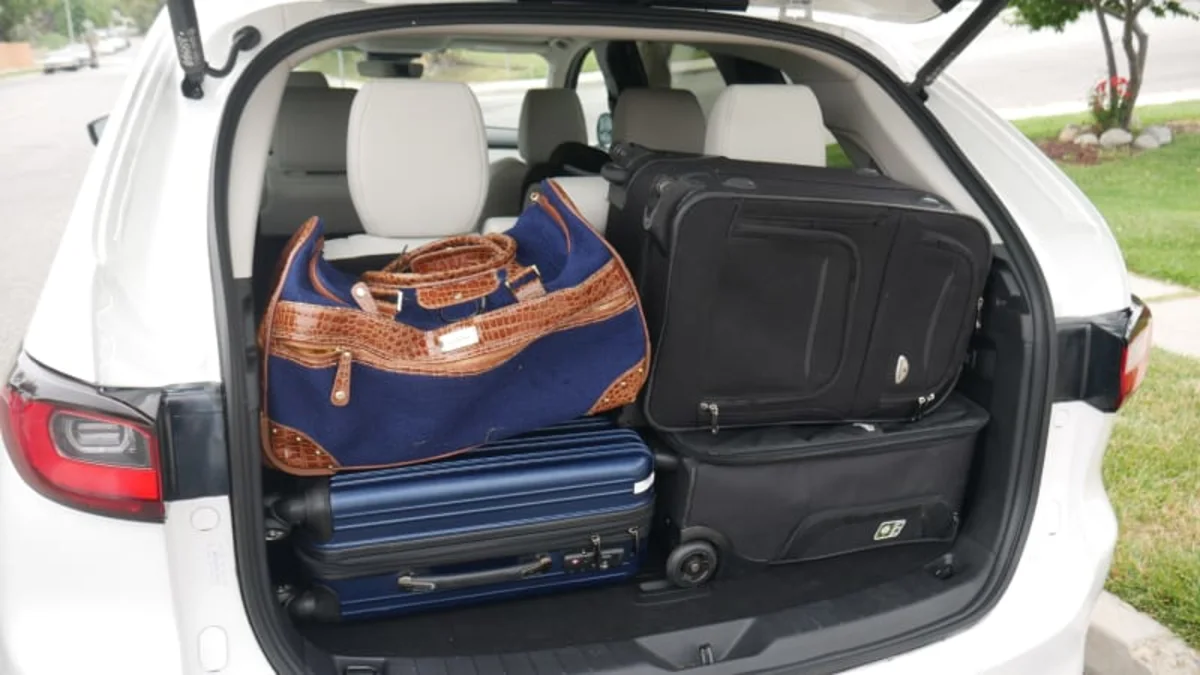

Not bad, honestly. That would be the four smallest bags, including the fancy bag that just barely fit. By comparison, the CX-9 could not fit the fancy bag, although a slightly less rigid duffel would fit.
As such, the less raked upper cargo area does in fact make a big difference here. It effectively allows the CX-90 to surpass the amount the CX-9 could achieve WITH the underfloor storage counted. If you didn’t count that, the CX-90 would be even better.

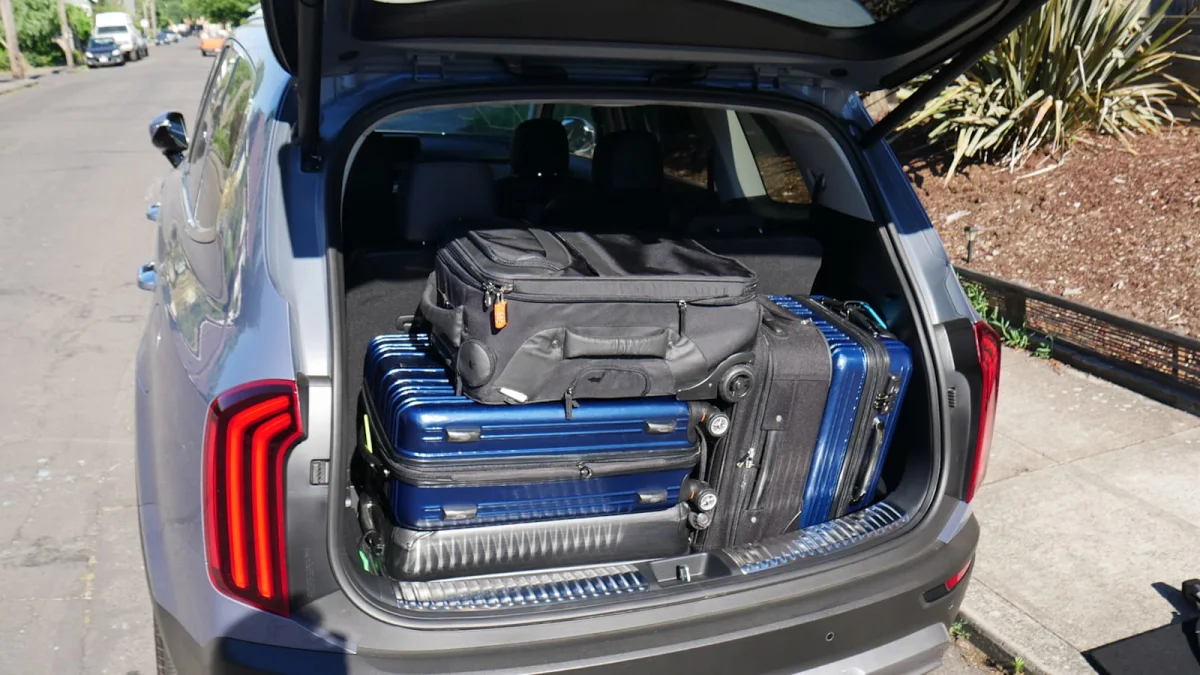
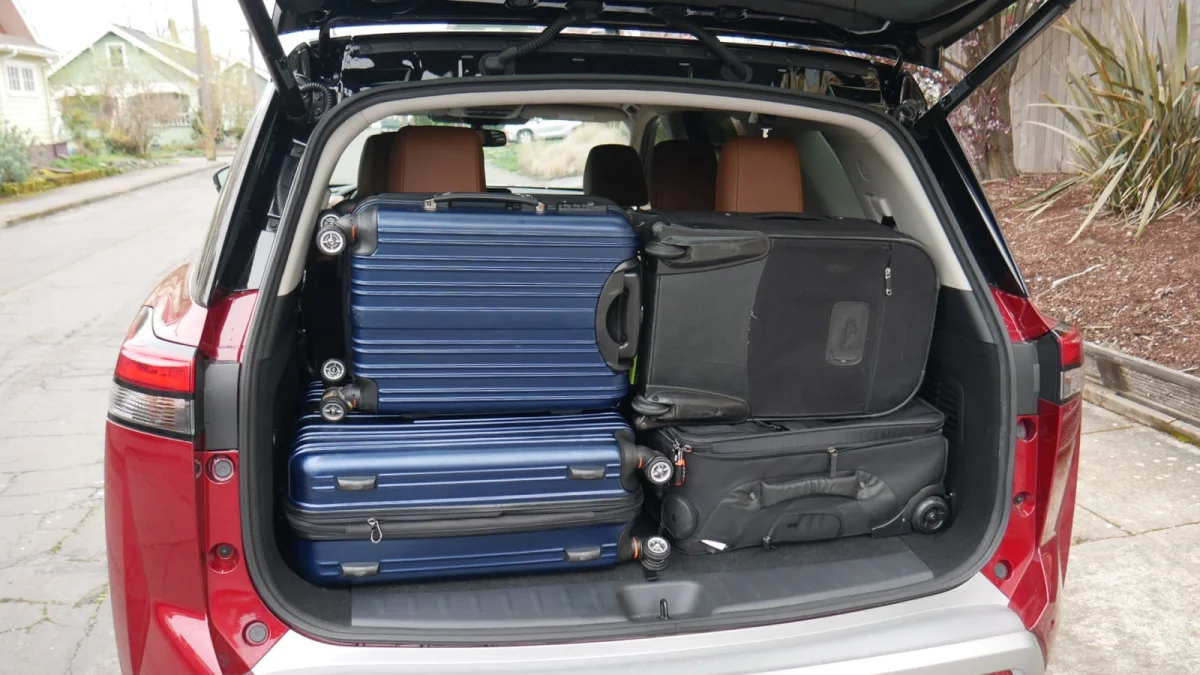
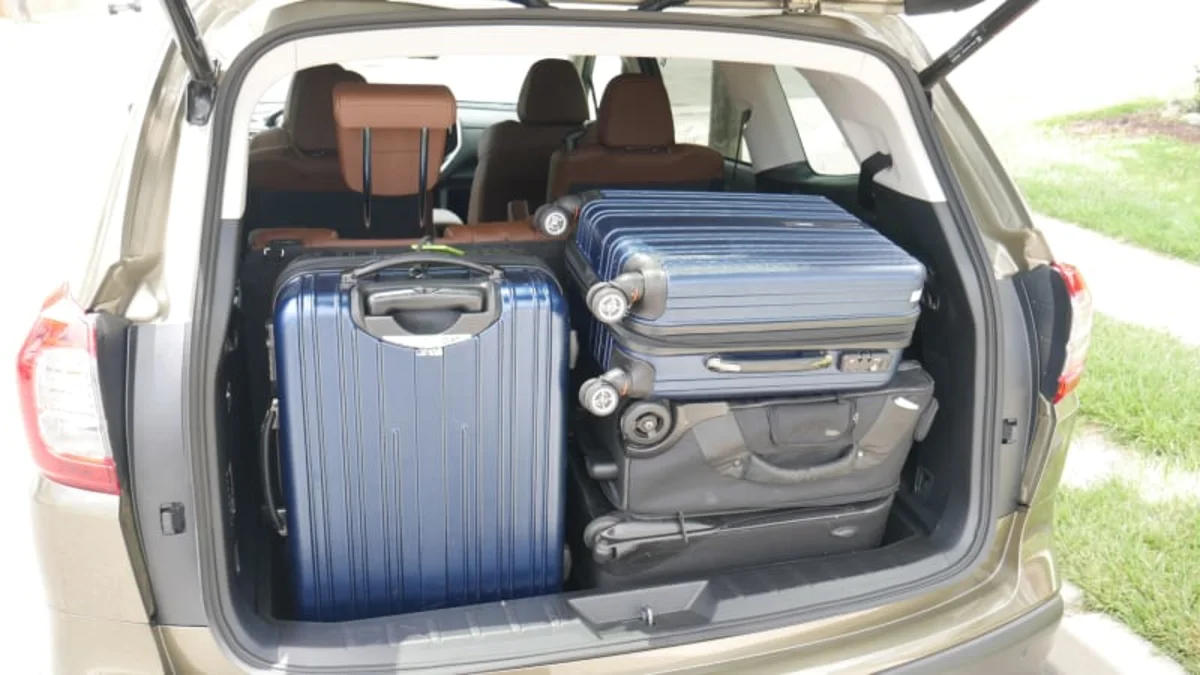
That said, the lack of an underfloor storage area does mean the CX-90 cannot hold as much as the (clockwise from top left) Honda Pilot, Kia Telluride, Subaru Ascent and Nissan Pathfinder. It also holds the same bags as the Toyota Highlander, but it’s a much worse fit.
So, although it’s better than the CX-9, that’s not saying that much. It still trails every mainstream rivals. Mwah-mwah, worst in class.
But wait, Mazda has premium aspirations and the rest of the CX-90 certainly indicates it achieves them. What about luxury models?
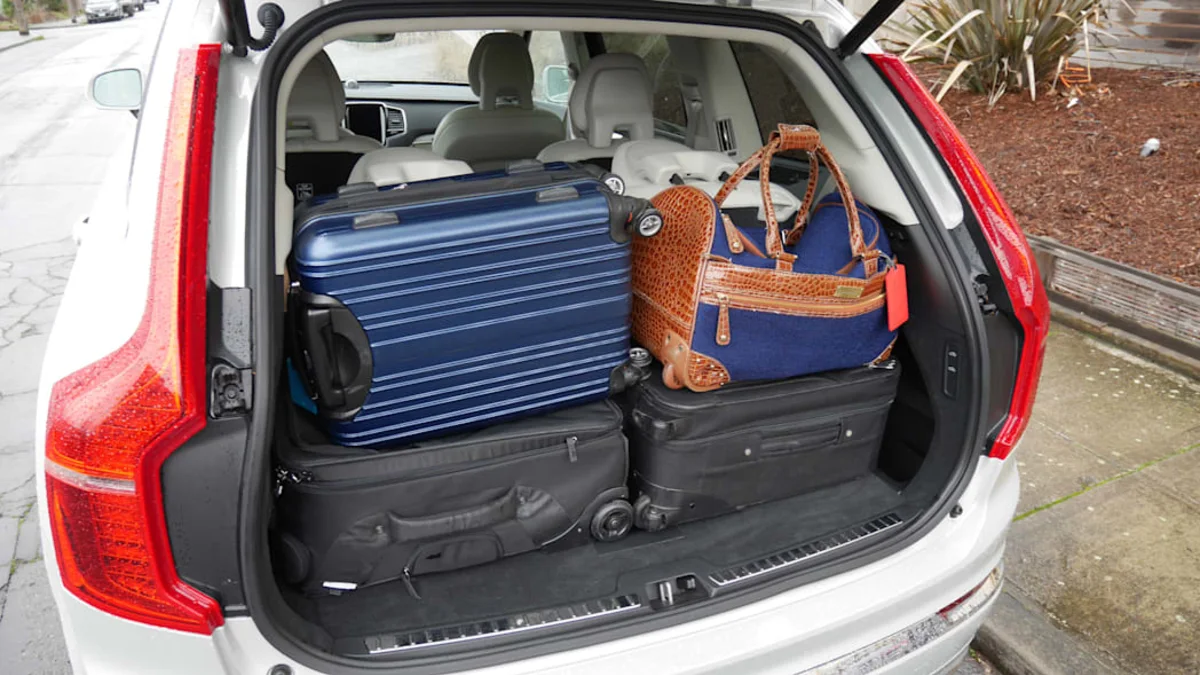
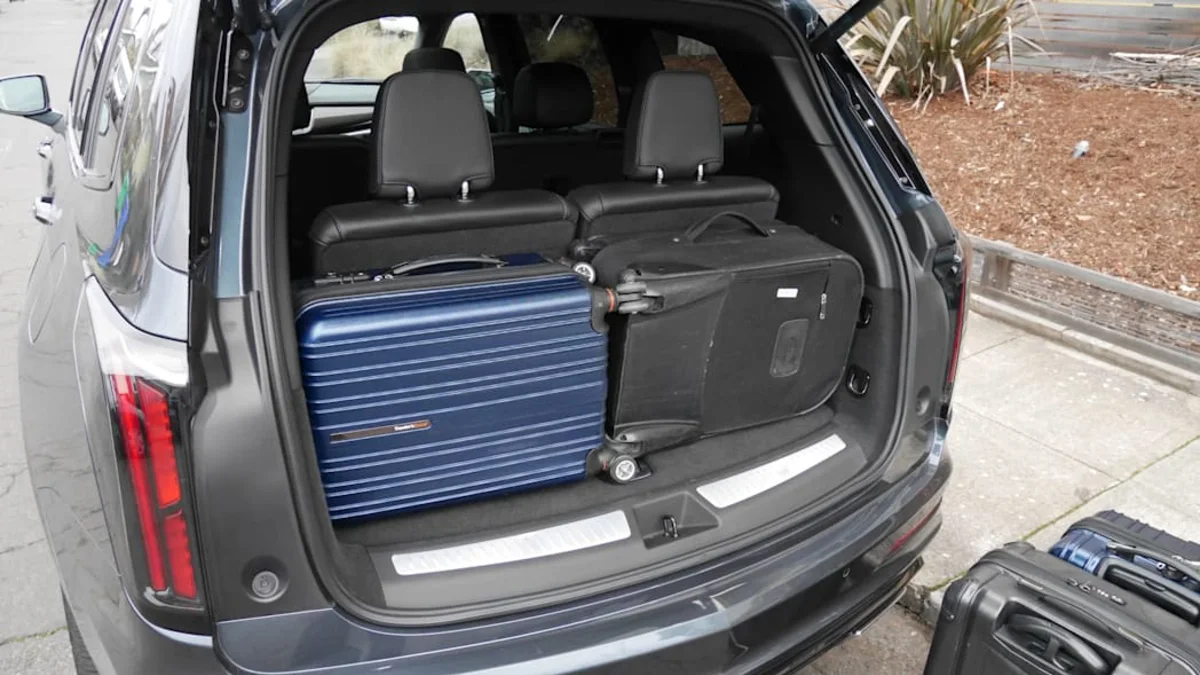
Of the models I’ve tested, turns out its exactly the same as the Volvo XC90 and WAY better than the Cadillac XT6. So there you go, the CX-90’s cargo competitiveness totally depends on whether you consider it a luxury model or not.
Finally, there’s one more thing. The liftgate itself.

It doesn’t open nearly high enough. I clonked my head three times doing this test. I literally need to bow to get under there. Competitors are way better in this regard, too.


